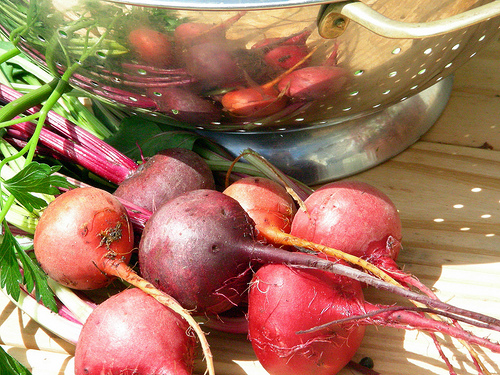Beets, demystified

When it comes to beets, I get a little edgy. I am still emotionally scarred from being fed crinkle cut canned pickled beets as a child. They were so revolting, leaking their bright red vinegar juice out onto the plate, lying there sullenly, their crinkle cut failing to lighten the mood. Disgusting.
I didn't eat beets for years after that. At least a decade passed before I was willing to give beets another chance. I still pass over the beets you find at a salad bar (cold, lumpy things akin to the crinkle cuts of my childhood nightmares). But fresh beets, prepared well, are an outstanding way to get a big wallop of nutrition.
Being a root vegetable, beets are high in minerals: magnesium, potassium, iron, manganese and copper. They also contain a lot of folates, vitamin C and a phytochemical called glycine betaine which helps ward off risk factors for stroke and coronary heart disease.
The easiest way to cook beets is to roast them. Rinse them well and cut off the stems. (Everyone tells you to save the greens and saute and eat them, but I can't bring myself to do it. I feed them to my chickens instead.) Preheat your oven to 400 degrees. Wrap the beets loosely in foil and set them in a pan to catch any leaking juices. Bake them for about an hour, or until they can easily be pierced with a fork.
Once they have cooled, the skin will slip off fairly easily. A paper towel can help chafe them off in a pinch.
Slice and serve with salt and pepper, either warm or cold. You can also dice them and serve them on salad, if you aren't carrying a lot of beet-related emotional baggage.
Image courtesy Flickr/B.D.'s world

1 comments